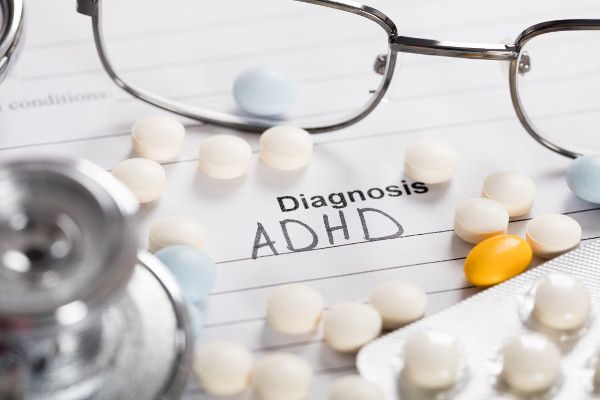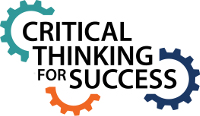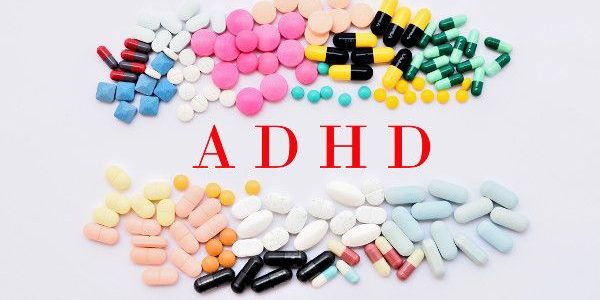Learn More About ADHD and How Cognitive Training Can Help You Manage It

Most people have heard of ADHD. Often, it’s described as a cognitive condition that makes it hard to focus. But you probably want to go beyond that vague understanding. Maybe you’ve received a diagnosis, or noticed symptoms that have made you wonder if you or your child has ADHD. With a diagnosis, there comes a host of recommendations, treatment plans, and prescriptions. But you might understandably have some concerns about finding the right treatment for you. After all, medical experts don’t fully understand ADHD to the point of having perfect solutions. But cognitive training is one alternative that avoids drugs and empowers patients to manage symptoms over the long-term.
Read on to learn more about the condition, traditional treatments, and how cognitive training offers a compelling alternative solution.
What Are the Symptoms?
ADHD stands for Attention Deficit Hyperactivity Disorder. It’s a cognitive condition that begins in childhood and often continues into adulthood. You may have also heard of ADD (Attention Deficit Disorder). But this term has fallen out of use. Instead, it’s been replaced by inattentive-type ADHD, one of the three main types of the condition.
These three types are predominantly inattentive ADHD, predominantly hyperactive ADHD, and combined ADHD.
Predominantly inattentive ADHD is characterized mainly by symptoms including:
- Difficulty paying attention to details and staying focused on tasks; easily distracted
- Schoolwork or chores frequently have mistakes, aren’t completed according to instructions, or are forgotten entirely
- Trouble listening, even when directly addressed
- Difficulty planning and organizing tasks
- Dislike and even avoidance of tasks requiring focused mental effort, especially homework
- Frequently losing items needed for completing daily activities like schoolwork, pencils, etc.
Children with predominantly hyperactive ADHD on the other hand mainly exhibit symptoms such as:
- Constant fidgeting, squirming, or tapping when seated
- Difficulty staying seated, trying to constantly stay in motion
- Climbing or running around in inappropriate situations
- Talking too much or having trouble being quiet
- Interrupting questions by blurting out answers
- Interrupting or intruding on other people’s conversations and activities
As you might guess, combined ADHD includes symptoms of both inattentiveness and hyperactivity.
However, it’s perfectly normal for many children to be inattentive, impulsive, or energetic. If your child struggles with these at school but is fine at home, or vice versa, don’t jump to conclusions. ADHD might not be the issue.
A proper diagnosis has additional criteria as well. The symptoms must have started before age 12 and continued for at least six months; symptoms must be exhibited across multiple settings such as home, at school, and with friends; the symptoms must interfere with the ability to function well in those settings; and the symptoms can’t be explained by other conditions like anxiety or learning disorders.

How Common is ADHD and What Causes It?
It’s estimated that between 5% and 9% of children have the condition, but it’s hard to say how accurate these numbers are. However, other educational and behavioral issues mimic ADHD, causing many misdiagnoses. Indeed, our understanding of ADHD is a work-in-progress. At the same time, there are also many cases that go un-diagnosed. For example, the official incidence rate is significantly higher for boys than for girls. But girls are more likely than boys to have inattentive-type ADHD, the type significantly more difficult to detect.
About 60% of people who had ADHD in childhood continue to have symptoms into adulthood. Typically, these symptoms shift almost exclusively into the inattentive category, even if they originally had combined of hyperactive-type as children. Even that remaining 40%, however, may still exhibit symptoms given a change in setting or circumstances, such as changing from an active job to a desk job.
As to what specifically causes the condition, the medical community still isn’t sure. Children with parents or older siblings who have ADHD are respectively 50% and 30% more likely to have it themselves, so it’s clear there’s some element of genetic heredity, but we’re not sure how exactly it influences the condition. Research also indicates that exposure to certain toxins like lead and pesticides during pregnancy, as well as other pregnancy troubles, may play a role as well.
In all of these cases though, we still don’t know what the mechanism is that triggers ADHD. Neurotransmitters like dopamine may be at the root of the issue, but we aren’t sure.
How Do You Treat ADHD?
The most common treatments involve medication and therapy.
The drugs most commonly used to treat ADHD are psychostimulants including amphetamines and methylphenidates. Stimulants appear to balance neurotransmitter levels and improve symptoms, but have potential side effects, especially for those with heart conditions. Other drugs prescribed for ADHD include atomoxetine, guanfacine, clonidine, and antidepressants like buproprion. These also have their own side effects, such as suicidal thoughts for antidepressants.
Other treatments for ADHD include behavior therapy, psychotherapy, and social skills training. However, these tend to focus on teaching the child behaviors that help them “act” like there’s no underlying problem, rather than relieve them of the symptoms they’re experiencing. Many parents find that traditional therapy doesn’t provide the outcomes they want for their children.
Cognitive Training Is an Effective Alternative Treatment
If you’re wary of the constant cycle of changing and increasing dosages on medications, or if traditional therapy hasn’t given you the desired results, then cognitive training may be the solution for you.
At its roots, ADHD is a condition that impairs your ability to function well by leaving certain core cognitive skills underdeveloped. Since we don’t fully understand the mechanisms of what’s going on in the brain of someone with ADHD, the best that we can do is train up those affected skills to counteract the condition and thus eliminate the symptoms that way instead.
Cognitive training with Critical Thinking For Success identifies the areas that need attention, whether it’s organization, focus, awareness, social skills, or reading and math. We then target the specific skills that play into how well your brain can perform in those areas, such as pattern recognition, field discrimination, abstract sequencing, and others.
Through regular coaching sessions and daily training exercises, cognitive training can improve those skills. Developing those skills improves your performance in those areas most affected by ADHD, such as focus and social skills. Over time, cognitive training can reduce and even eliminate symptoms.
If you or a loved one struggles with ADHD in Northbrook or the surrounding Chicago area, and you’re seeking solutions, give Critical Thinking For Success a call at 847-845-0422 and schedule a consultation. We provide cognitive training to children and adults, and will give you the individual attention you deserve. When you train your brain, the setbacks you can overcome will surprise you.
Editor’s Note: This post was originally published March 2017, and has been updated for thoroughness and accuracy.

